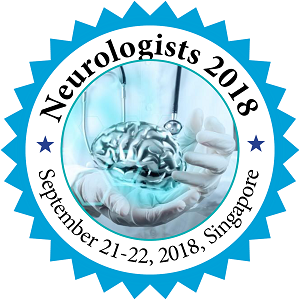
Li Xinyuan
Shanghai Tongren Hospital, China
Title: Efficacy of microvascular decompression for spasmodic torticollis
Biography
Biography: Li Xinyuan
Abstract
Objective To access the clinical efficacy of microvascular decompression(MVD) for spasmodic torticollis(ST).
Methods From January 2014 to Janurary 2017, a total of 117 patients with spasmodic torticollis treated with microvascular decompression at Shanghai Tongren Hospital were enrolled retrospectively. In this study, 110 cases underwent MVD with retrosigmoid approach and 7 cases underwent MVD with paramedian suboccipital approach. Intraoperative findings and follow-up results were analyzed.
Results The mean follow-up was 18.7 months. Six months after the MVD surgery, 33 cases(28.21%) were cured, 50 cases(42.74%) improved significantly, 21 cases(17.95%)improved moderately, and 13 cases(11.11%) improved minimally or unchanged. The total efficiency was 88.89%. Vertebral artery was the most common offending vessel in 104 cases(88.89%) and posterior inferior cerebellar artery (PICA) was offending vessel in 13 cases(11.11%). In the 110 cases with retrosigmoid approach, the neurovascular conflict was spinal accessory nerve(SAN) in 78 cases(70.91%), C1C2 in 37 cases(33.64%), and the junctional area of the brainstem and spinal cord in 21 cases(19.09%). In total, 2 or 3 conflict sides were involved in 15 cases(13.64%). Of the 7 cases with paramedian suboccipital approach, the conflict site was found in bilateral SAN in 2, in the C1-C4 in 3 cases, and in the spinal cord in 2. Postoperative complications, which including shoulder numbness in 3 and hoarseness in 1, were completely relieved during the follow-up period. There was no limb weakness, cerebrospinal fluid leakage, infection, cerebral hemorrhage and other complications.
Conclusions Vascular compression may be one of the major causes of ST. MVD is a safe and effective method for the treatment of ST. With the study of etiology and pathogenesis, MVD might be one of the most effective methods to treat ST in the future.

